CustomRCmodels R/C Tank's | home
German Tiger
German Heavy Tank Panzerkampfwagen.VI Tiger Ausf. H1/E (Sd.Kfz.181)
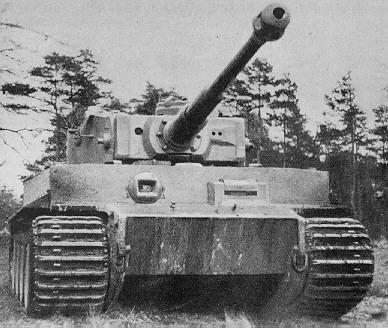
This Tiger I was produced sometime in the late winter/ spring of 1943, and is probably serving with SpzAbt 502. The H1 in the title heading referred to when Tigers were initially produced in 1942 and were not a designation that continued. This was to distinguish between the Tigers (H2) with the proposed entirely different turret that housed the Kwk 42/ L70 75mm gun. The proposal was discontinued as the Panther in development would receive these guns in another type of turret similar to the one proposed for the Tiger I (H2). Matter of fact, Tiger I was not a designation either, until sometime after the Tiger II came out.
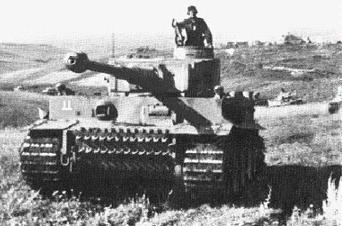
This is a Tiger from Spzkp of then PanzerGrenadier division Das Reich at the time of Kursk. It was the 8th company in the newly formed panzer regiment after the unit had refitted in 1942. Upon returning to Russia in early 1943, they had 14 Tigers and were thrown into the 2nd battle for Kharkov. During Kursk only one tank in each one of the SS divisions were a total write-off; however mines and PAKs kept the numbers deployed very low. At the famous battle of Prokhorovka on July 13th 1943, there were only a few Tigers from each division that deployed. The Soviets reported that 700 Tigers were destroyed when there were only a total of about 140 present at the battle.
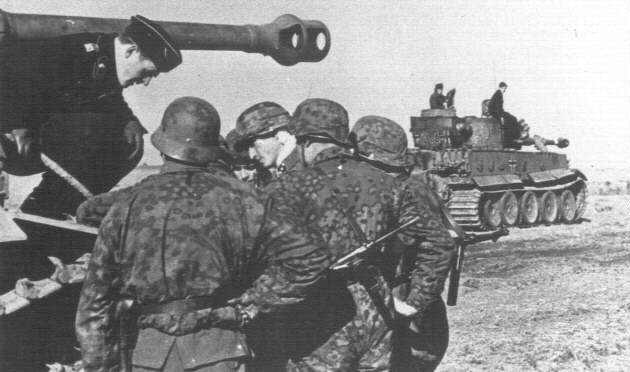
This is a Tiger of SpzAbt 503 supporting the 3rd SS Panzergrenadier Division `Totenkopf' during the battle of Kursk.
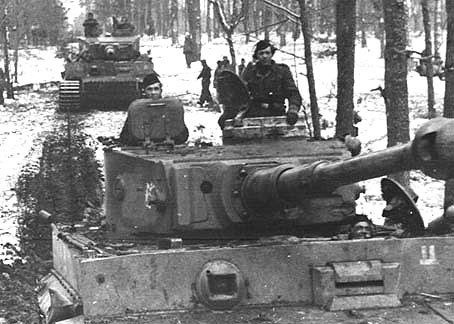
This is a picture of S33(Followed by S13) of Das Reich in the fall of 1943. There are a number of pictures in a series of these tanks. The Das Reich divisional symbol for Kursk is still present long after the battle is over. The symbol was to confuse the enemy with unit identification. Other units would have similar symbols and were much different from the real unit symbols.
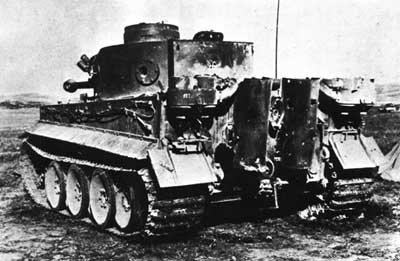
This is a very early picture after the capture of #131 of SpzAbt 504 in North Afrika. There were quite a few changes made to the tank. The loader's hatch had been shot through while it was upright, but it was later replaced before the King and Churchill arrived to personally view it. Also the drivers hatch was changed out with another radio operator's hatch, so it's a mirror image opposite of what it's supposed to be and this is easily noticeable when looking at overhead pictures.
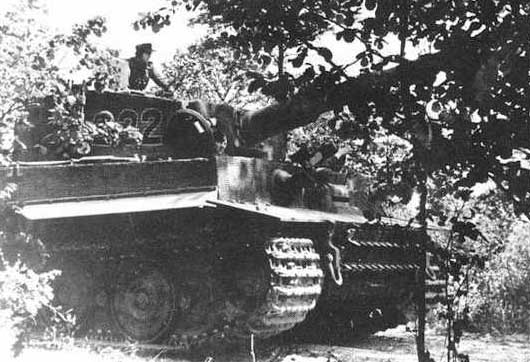
This is a photo of a 2nd Company tank(Wittman's company) of SpzAbt (SS) 101 of the 1st SS Panzer Korps in France. This might be hull #222 that Wittman used during the Villers-Bocage battle. If so the commander in the hatch is Kurt Sowa who later lost an arm, but yet was still a panzer commander and his later Tiger II has many photos (see the King Tiger photo with the Fallschirmjagers onboard during the Ardennes Offensive). The 2nd company was all comprised of steel-wheeled Tigers as they were all produced after January 1944. The other two companies were produced earlier and had rubber tired wheels.
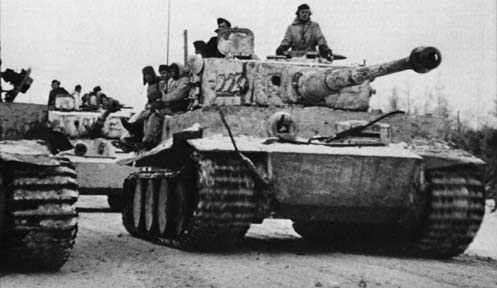
These are Tigers from SpzAbt 505 during the fall/ winter of `43/'44 in the Soviet Union. This is a later production tank that was supplied to the unit after the Battle of Kursk and was produced late in 1943. It does not have the single center light by the machine gun port, but still has it on the deck by the driver's hatch. The tank behind it has the later center light.
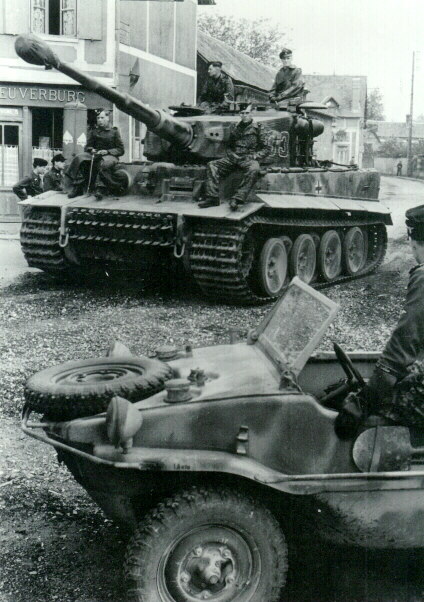
This is a vehicle from the 1st Company of SpzAbt (SS) 101 of the 1st SS Panzer Korps in France. This was the second company to form in the panzerkorps after leaving the Soviet Union. The 2nd company was the last to leave. These tanks had detrained and were moving to the invasion front when this picture was taken, and were the first Tigers to meet the allies. It's company commander was Mobius. A lot of these 1st company tanks were also at Villers-Bocage.
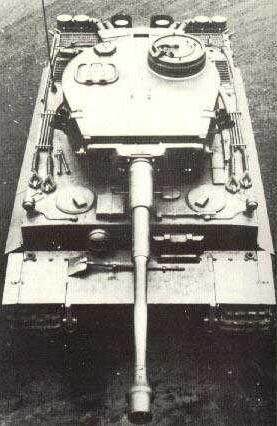
This is a unknown Tiger produced from January-March of 1943,
at the same time period that the Afrikan Tiger in the Bovington museum was produced.
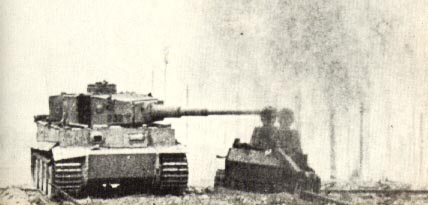
This is a photo of a Tiger on the hunt. This is actually half of the photos that were taken together. It shows a Tiger from SpzAbt 502 in Northern Russia and a destroyed Soviet tank in the background. The photo that goes on the right of this photo shows a following Tiger with it's barrel pointing in the opposite direction moving down the road also with another destroyed Soviet tank on the left.
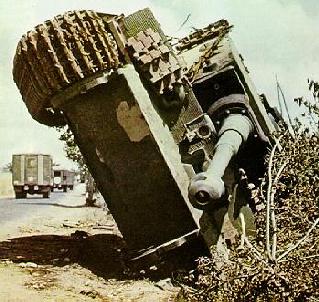
This is a tank of SpzAbt 508 in Italy. It is a late `43/ early '44 production tank.
The tank was pushed to the side of the road to allow passage of Allied vehicles. It has burned partially.
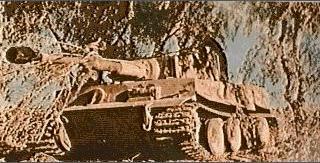
This is the earliest production Tiger on this series, it was produced in late 1942 and it belongs to the 1st company of SpzAbt 501 in North Afrika. The 1st company tanks could be discerned by their tell-tale light mounts on the driver's glacis, and had been moved down from the top deck. The 2nd company had steel rods that held extra tracks in these locations, and the 3rd company had neither, and had production mud guards in the front vice the early set that the 1st and 2nd company had. These tanks joined their units when Axis forces were confined to Tunisia, still there were some very notable battles where these tanks always few in number, knocked out large numbers of the enemy.
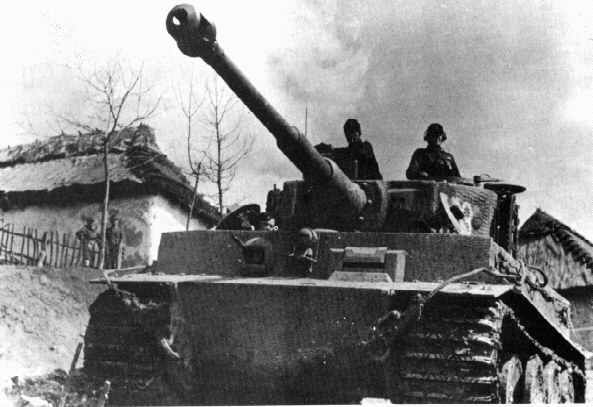
This Tiger in Russia in the summer of 1944, was produced prior to February 1944.
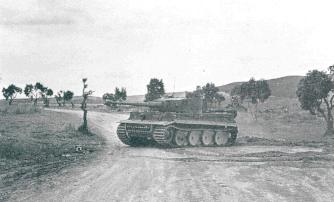
This is another picture of the Afrikan Tiger #131 of SpzAbt 504 during the demonstrations. This photo was taken after the one earlier in this series. The Tiger looks darker, and adds to the conjectures that these tanks were painted a non-descript green color. The tanks were not and remained their original color which comprised a base tan-like color close to dunkelgelb and small patches of green camo which are hard to discern in the photos. Some pictures of this tank in better light, show this tank overall as very light in color.
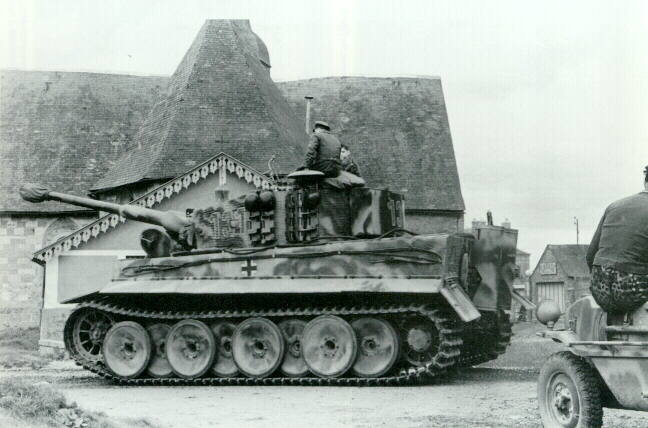
This is another vehicle from the 1st Company of SpzAbt (SS) 101 of the 1st SS Panzer Korps in France during the same photo shoot as one of the above photos, and shows the same individual in the schwimmwagon.
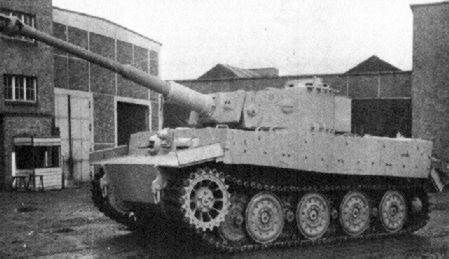
This photo shows a newly produced Tiger, produced after January of 1944. It has on the narrower transport tracks, and it has it's fender's in the up position and the mud guards removed for transport. Note the difference in the mounts for the towing shackles from the earlier Tigers above.
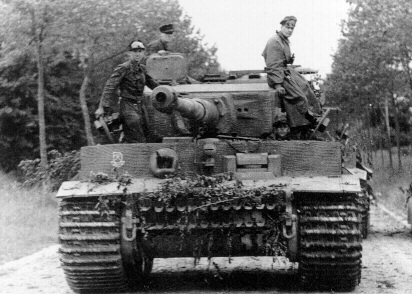
This is a photo of another 2nd Company tank(Wittman's company) of SpzAbt (SS) 101 of the 1st SS Panzer Korps in France. This photo is taken from a series of photos and the Tiger who's hull number is not clear, is towing Tiger 231. This photo was taken after Villers-Bocage. Note that they are conducting this during the light of day.
German Engineer Tank Bergepanzer Tiger Ausf. E
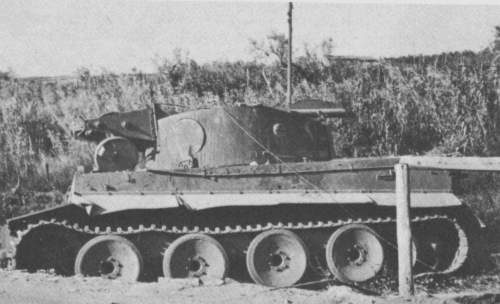
This tank belongs to SpzAbt 508 in Italy. This tank is like the caption above the photo incorrectly describes this tank as a Bergepanzer or Bergetiger. In fact, this tank was converted by the SpzAbt 508 to position large explosive charges against barriers in the close confines of the Anzio-Nettuno battles. Italeri even has a kit of this tank and describe it was a BergeTiger. The winch and boom were not large and would not have been able to support towing another Tiger.